What methods must be taken to grow herbaceous hibiscus in your area
Herb hibiscus is a perennial plant belonging to the Malvov family. The stems of this plant can stretch above 2 m, the main condition for growth is a lot of light and abundant watering. Therefore, it is worth planting hibiscus in bright places. The perennial root releases new branches every spring.
Content:
- General information about herb hibiscus
- Hibiscus varieties
- Herb hibiscus care
- Reproduction of herb hibiscus
- Landscape design
General information about herb hibiscus
Herbaceous hibiscus Is a bush with strong and tall shoots on which leaves and flowers grow abundantly. Flowers can be of various colors from white to burgundy red. The size of a flower can reach a diameter of up to 30 cm, and the number of petals in some hybrid species is 12 pieces.
The leaves, which are dark green in color, may differ in shape from different varieties of hibiscus.
They are round, oval, or lance-shaped. Herb hibiscus tolerates winters very well and is a frost-hardy plant. No special insulation is required before wintering.
Hibiscus varieties
Growing hibiscus was fashionable back in the 60s.
During this period, breeders bred many new varieties and hybrids of this plant. After that they were a little forgotten. Recently, more and more gardeners and landscape designers are turning their attention to hibiscus. Moreover, there is plenty to choose from.
Silver moon:
- This hibiscus variety has strong stems up to 130 cm in height.
- It blooms in a pale pink color.
- The flowers are large, closed, five-petal.
- This variety can only be propagated by cuttings.
- When propagated with the help of seeds, the color of the flowers will change.
Fantasy:
- The bush is low, about 90 cm, the leaves are dark green, reminiscent of maple leaves.
- It blooms with large flowers, 25 cm in diameter, lavender in color.
- The flowering period lasts almost until autumn.
Fireball:
- The bush can reach a height of 120 cm, the leaves on it are dark green with a purple tint.
- They completely cover all the stems of the plant.
- Huge maroon flowers reach 30 cm in diameter.
- The flowering period is all summer until autumn.
Copper King:
- This hibiscus variety is distinguished by the color of the leaves.
- They are maple-shaped and dark purple in color.
- The height of the stems can reach 120 cm.
- The bush blooms with large white flowers with a red center and veins on the petals.
Herb hibiscus care
Herb hibiscus does not require special care:
- For good growth watering and feeding is important.
- Water it regularly and abundantly, but avoid stagnant water.
- Also, once a month, it is necessary to feed the plant with nitrogen fertilizers.
Getting the plant right for winter is also important for good summer bloom.
When freezing, the plant does not bloom so abundantly and may even die. Therefore, before wintering, the hibiscus stems are completely cut off, the bush is watered abundantly, spud and mulched with foliage or grass.
Reproduction of herb hibiscus
Reproduction of hibiscus herbaceous can be carried out by seeds and cuttings. The grafting procedure is best done in early summer when the sprouts are still low. By the fall, such cuttings will take root and strengthen the root system in order to winter safely.
When shoots begin to break through from the roots at the end of spring, during this period you can take several cuttings from the middle of the bush. It is important that 5-7 shoots remain on the bush after the cuttings are removed. It is better to remove cuttings in the evening, having previously well watered the ground around the bush so that it is well saturated. When the ground is sufficiently wet and loose, excess processes are very easily pulled out of it.
When the process is pulled out, it is necessary to carefully examine it.
If there are roots, the rooting of the plant will be more successful; if there are no roots, the process will take longer. After that, the upper part of the process is removed so that only a few leaves remain. The shoots are planted in a sunny place, it is possible with a light shade or artificially made shade, until the plant is completely rooted.
When the herbaceous hibiscus shoots are well rooted, the artificial shade can be removed. Usually, flowers appear on new plants in the same year in the fall. But do not overload the young bush with a large number of flowers when many buds appear. It is better to remove most of it so that the root system is strengthened.
As the hibiscus grows in height, it must be tied up so that the trunk does not break with a gust of wind.
After wintering, a strong bush of a young plant can produce 3-4 stems.
When propagated by seeds, it all starts with germinating the seeds in early March:
- The required amount of seeds is placed in transparent gauze and periodically ventilated to prevent decay.
- For a good effect, the place should be warm and humid, but even under ideal conditions, some seeds will not germinate, they must be removed.
- Sprouted seeds must be sown in a deep-bottomed container, as the roots develop in straight downward branches.
- The soil for this can be taken universal.
- We put the seeds in the soil with seedlings down and sprinkle with earth 1 cm.
- For better germination, you can make a small greenhouse and air the seedlings daily.
- Seedlings appear in 4-7 days.
- They need to be watered regularly and the soil loosened for better air penetration.
The period of planting plants in open ground is chosen warm, but not hot, it can be the end of May or the beginning of June.
Choosed well lit place and soil, which should be with the addition of peat and sand. When planting, the plant should not be deeply deepened into the ground. In the process of development and growth, the root strengthens and deepens to the depth necessary for the plant. In the first year after planting in open ground, hibiscus blooms, its stems are not very high, up to 1 meter, but flowers appear by the end of summer.
Landscape design
Herb hibiscus is perfect for almost any decorative garden... Due to its frost resistance and unpretentious care, gardeners and landscape designers constantly use this plant in garden decoration.
Large and bright flowers that appear almost in the first year of planting a plant look very impressive in any interior.
And many varieties with all kinds of flower colors allow you to easily choose the plant you need in quality and color for any garden.
More information can be found in the video.



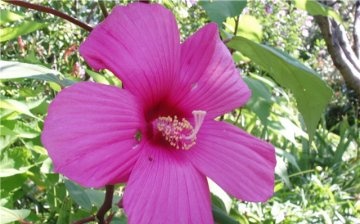
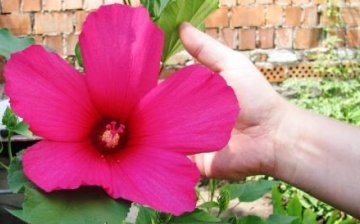
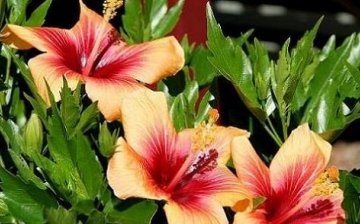
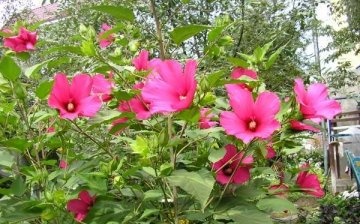
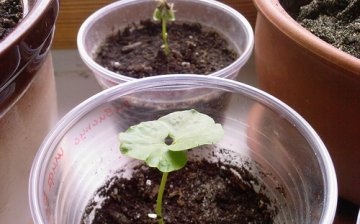
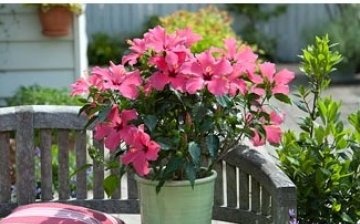







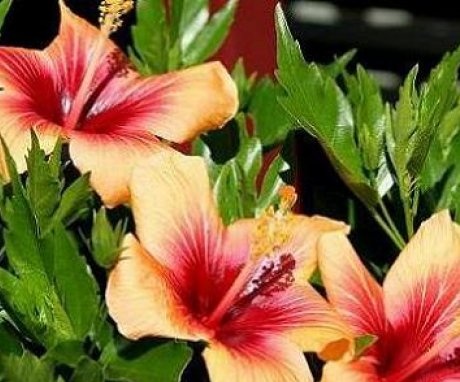
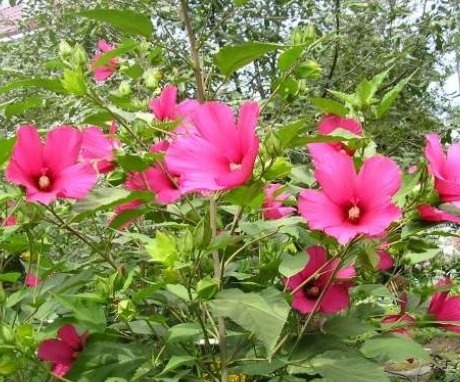
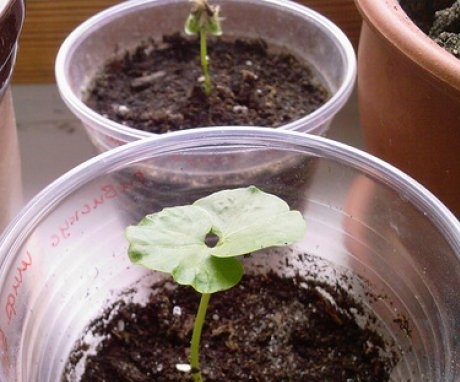
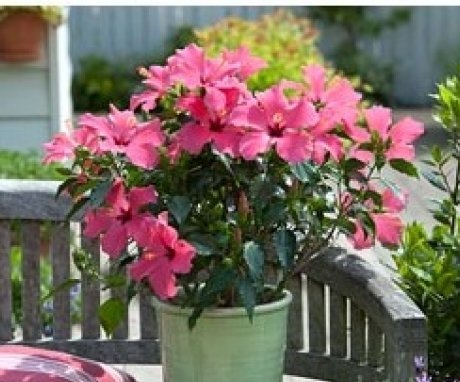
Yes, the article was very helpful, but if I had a question only in March, it is possible to plant it or it is possible even earlier, and then the seedlings would be poured into the cups of the shtob, and in the spring it will be possible to plant the scars, or is it impossible?